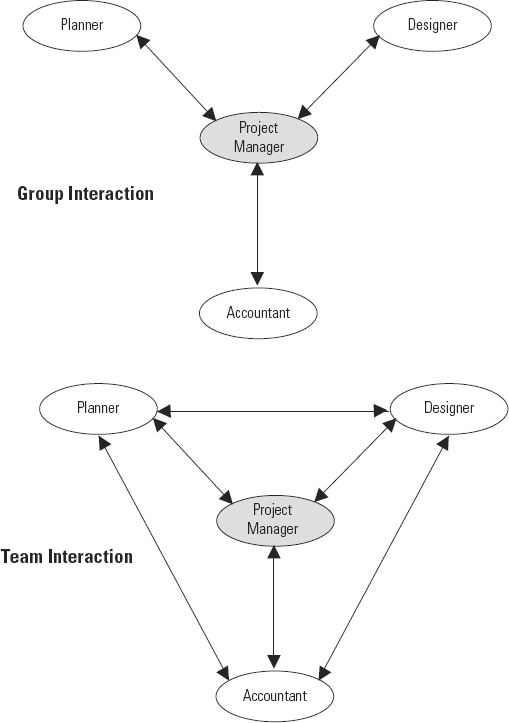Chapter 13
Teams vs. Groups
- Understand the difference between a team and a group.
- Understand how to develop a group into a performing team.
- Understand the kinds of tasks that are suitable for groups to tackle, and when we need a team.
- Understand the potential dangers of high cohesion between individuals in a group/team.
We often refer to teams and groups and frequently the words are used loosely and not always appropriately. There are many different representations of teams but it is not always clear what the difference is between a team and a group. In the project environment, a team implies a number of people working together to achieve a common goal, while a group of people implies a collection of individuals who, although they might be working on the same project, do not necessarily interact with each other. This is often the case when the project manager coordinates the people within the group individually. Under such conditions, unity of purpose is a myth (see Figure 13.1).
Figure 13.1: Project Team Structure – shows the link between the project manager and the other team members

Developing a team can take much investment of time and energy, so we need to question if we need a team for every occasion. Perhaps a less-developed group is sufficient for our project?
Both teams and groups can be used as ...
Get Project Management Leadership: Building Creative Teams, 2nd Edition now with the O’Reilly learning platform.
O’Reilly members experience books, live events, courses curated by job role, and more from O’Reilly and nearly 200 top publishers.

